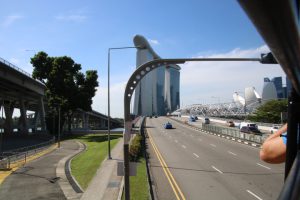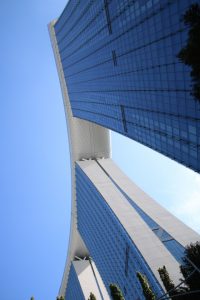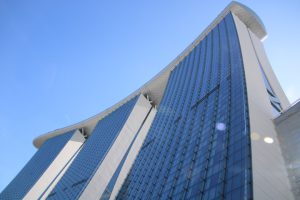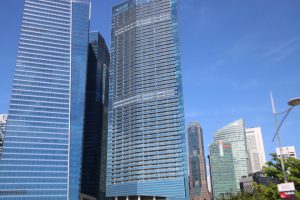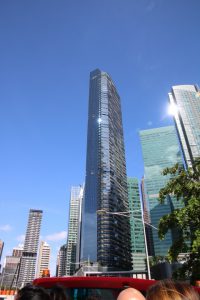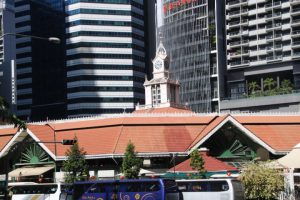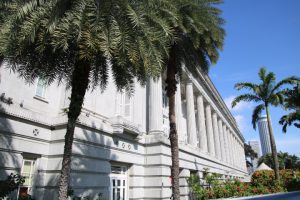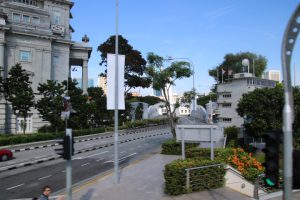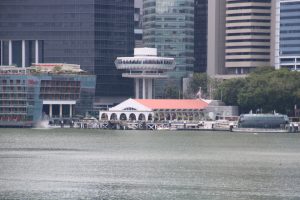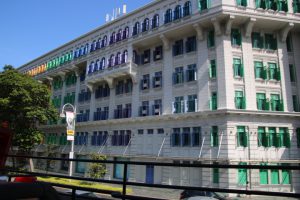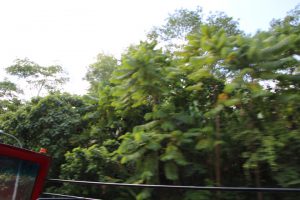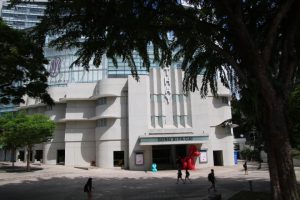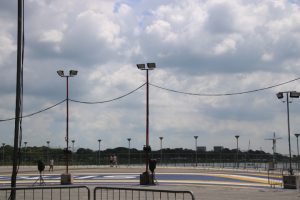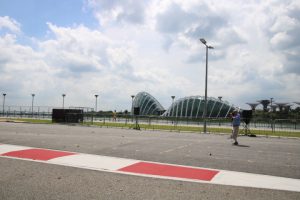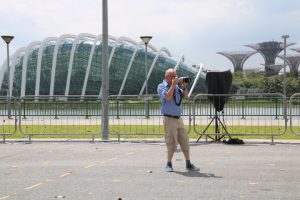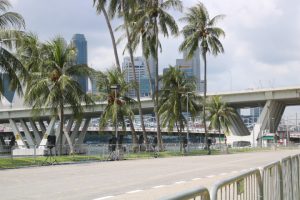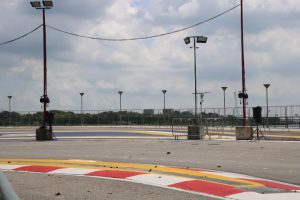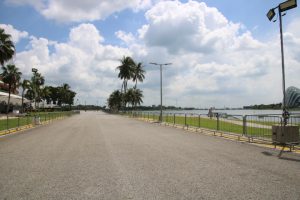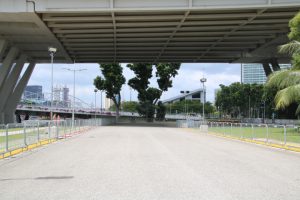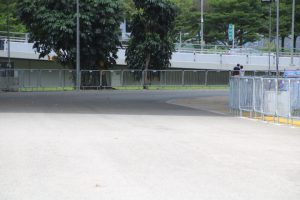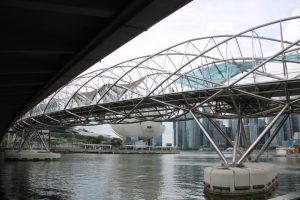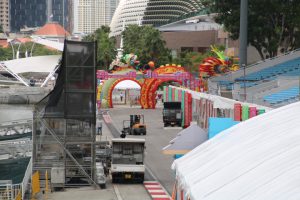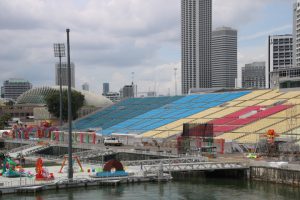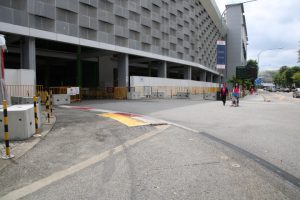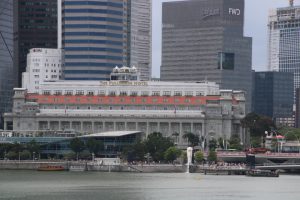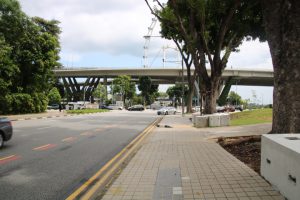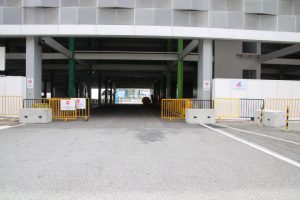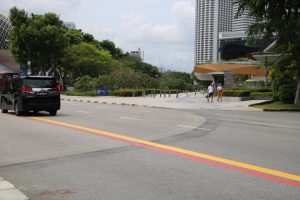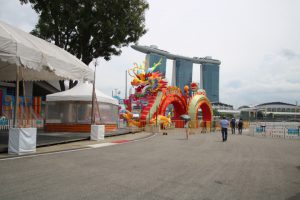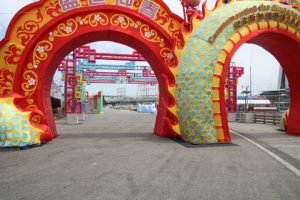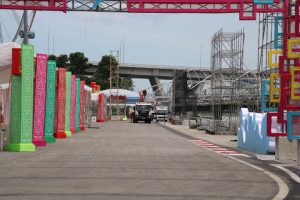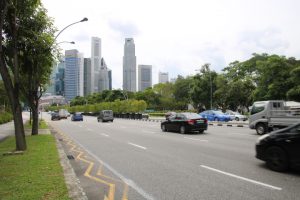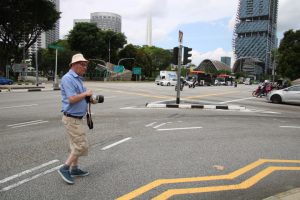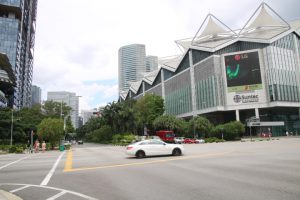Today is Hop-On – Hop-Off Day. We rendezvoused with the bus outside Raffles Hotel and headed towards Marina Bay. This area is surrounded by so-called iconic Singapore sights such as The Marina Bay Sands Resort and the Singapore Flyer. We came across both of these yesterday but it was good to get up close. We headed west along a branch of the Marina reservoir which is the clean freshwater area separated from the sea by the Marina Barrage. This area was the original dockland before and immediately after the second war but today is a leisure complex.
Turning north we twisted our way through a warren of skyscrapers to reach the Clifford Pier.
This Art Deco pier was built in 1933 and was the main point of arrival and departure of ocean liners. Today the building is a restaurant.
From here we headed inland passing St Andrew’s Cathedral. The church is built upon land selected by Raffles himself and preserves several artefacts presented to Singapore by British Governments and the Royal Family. There is the Canterbury Stone and the Coventry Cross, the latter is made of silver plated nails from the ruins from the bombed (WW2) Coventry Cathedral, and the Coronation carpet, one used in the ceremony of 1953 at the coronation of Queen Elizabeth II.
Further inland we ran alongside the Singapore River. Here are the remains of the 1920s and its godowns (warehouses) which today form Singapore’s largest conservation project. At Clarke Quay are godowns that were the centre of city life as it was here that Sir Thomas Stamford Raffles started the development of the city and its trading connections with the rest of the world. Small boats called bumboats transferred cargoes to and from warehouses along the narrow creeks that could not be navigated by the ocean going ships. Nearby is Robertson Quay where swampland was reclaimed as trade thrived and here the godowns were built.
At the Singapore Botanic Gardens we reached our furthest point from the city centre. The park preserves a section of rainforest thought to be one of the finest collections in Southeast Asia and is a UNESCO World Heritage site. Henry Ridley, a British botanist became its director in 1888 and spent 23 years protecting the forest but also developed its horticultural potential such as tapping rubber from some of the trees. This was exported via the port. We returned through a small canyon of shopping malls which dominate the remains of some of the 1930s Art Deco suburbs.
In the afternoon we explored a section of the city’s Formula One (motor racing) Grand Prix circuit. We saw the back of the pits but weren’t allowed entry.
We did manage to see turns 23 and 24, the last two on a lap and the entry to the pit lane.
Although some of it is new construction this still reflects the street circuit nature of the rest of the course. It is surprising how narrow it is and how difficult overtaking must be as there are only short distances between many of the corners. We followed the new section to its junction at turn 21 with Raffles Avenue.
From today’s traffic lights we walked to turn 20 where the cars would blast upwards underneath the grandstand from the waterfront having arrived here by a sharp righthand turn of Raffles Avenue through what was today a children’s playground. In this section the remains of the road markings defining the circuit are still visible.
At the junction of Esplanade Drive, Nicoll Highway and Stamford Road is the closest place where cars travelling in different directions can be found. Essentially cars towards the beginning of a lap come down Nicoll Highway to this location and turn sharp right, but cars further along the lap head north along Esplanade Drive to turn right onto Raffles Avenue, so the space between the opposing vehicles is essentially the middle of today’s road junction.
This junction is overlooked by the War Memorial locally known as ‘the chopsticks’ which symbolise the races (Chinese, Malay, Indian and other nations) that suffered during the Japanese occupation. The remains of unidentified victims are buried at the base.
Returning to the race the cars turn left at the Stamford Road traffic lights to go down St Andrew’s Road to pass the National Art Gallery and cross the Anderson Bridge over the Singapore River to turn sharp left in front of the Fullerton Hotel.
The early section of the circuit on Raffles Boulevard we did by bus but left the circuit at turn 5 therefore missing a short section of a complete lap.
